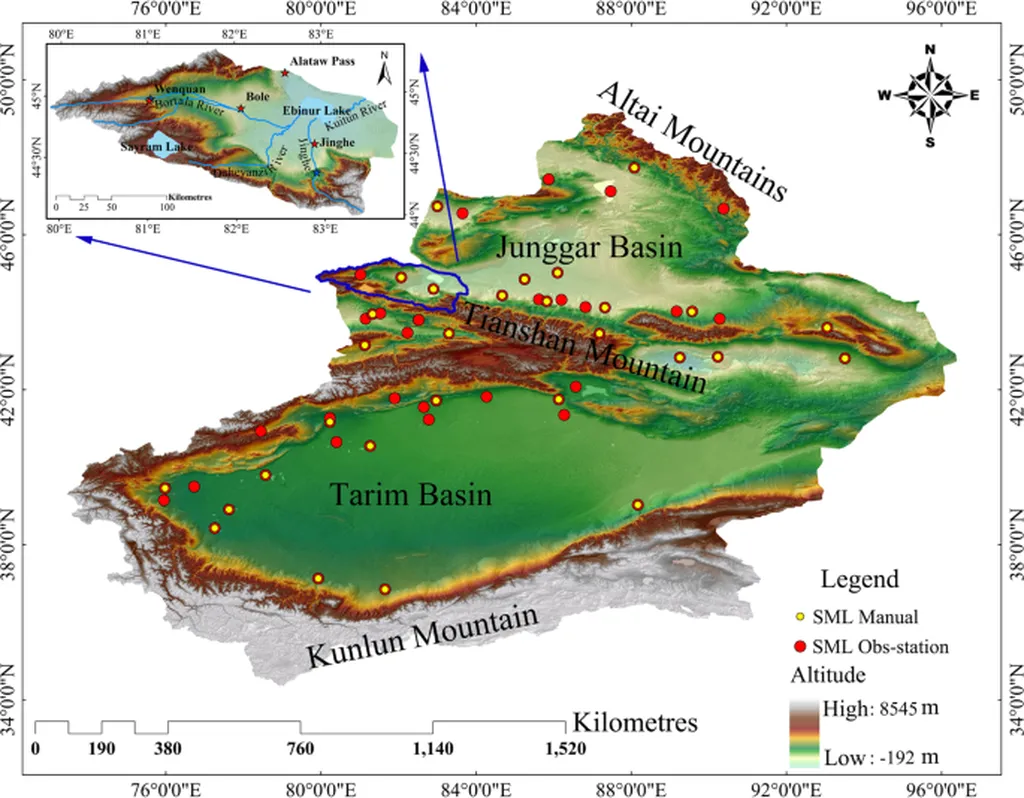In the heart of China’s Heihe River Basin, a groundbreaking study led by Liya Qin of the Precision Forestry Key Laboratory at Beijing Forestry University is revolutionizing how we understand and map soil composition. The research, published in the journal *Agriculture* (translated from Chinese), introduces a novel two-point machine learning (TPML) framework that enhances the prediction of soil particle size fractions (PSFs) and classification of soil texture types. This advancement holds significant implications for the energy sector, particularly in sustainable land management and soil resource assessment.
Soil particle size fractions—comprising clay, silt, and sand—are crucial for understanding soil health and fertility. However, these fractions form a compositional dataset constrained to sum to 100%, presenting unique challenges for accurate mapping. Qin’s study addresses these challenges by integrating spatial autocorrelation and attribute similarity into a hybrid machine learning model. “The practical implications of incorporating compositional data characteristics into PSF mapping have been insufficiently explored,” Qin explains. “Our TPML model bridges this gap, offering a more precise and reliable method for soil resource assessment.”
The TPML model was compared with other popular machine learning models, including random forest regression kriging (RFRK), random forest (RF), XGBoost, and ordinary kriging (OK). The results were impressive: TPML achieved R² values of 0.58 for clay, 0.55 for silt, and 0.64 for sand, demonstrating its superior ability to predict soil particle sizes. Notably, the ALR_TPML predictions showed the most consistent agreement with observed variability, with predicted ranges of 2.63–98.28% for silt, 0.26–36.16% for clay, and 0.64–96.90% for sand.
For soil texture classification, the study developed a novel TPML-C model, which achieved right ratios of 61.09%, 55.78%, and 60.00% for raw, ALR-, and ILR-transformed data, respectively. This means the model correctly identified 25, 26, and 27 types out of 43 soil texture classes. “TPML with raw data exhibited strong performance in both regression and classification, with superior ability to separate ambiguous boundaries,” Qin notes. “Log-ratio transformations, particularly ILR, further improved classification performance by addressing the constraints of compositional data.”
The implications for the energy sector are profound. Accurate soil mapping is essential for sustainable land management, which in turn supports the development of renewable energy sources like biofuels and wind farms. Understanding soil composition helps in identifying suitable locations for energy projects, optimizing land use, and minimizing environmental impact. “This research demonstrates the promise of hybrid machine learning approaches for digital soil mapping and precision agriculture,” Qin says. “It paves the way for more informed decision-making in soil resource management and sustainable land use practices.”
As the world grapples with climate change and the need for sustainable energy solutions, advancements in soil mapping technology are more critical than ever. Qin’s research offers a glimpse into the future of digital soil mapping, where machine learning models like TPML can provide the precision and reliability needed for effective land management. With the energy sector increasingly focused on sustainability, the insights gained from this study could shape the development of cleaner, more efficient energy solutions.
In the rapidly evolving field of agritech, Qin’s work stands out as a beacon of innovation. As the world continues to explore the potential of machine learning in agriculture, the TPML model offers a powerful tool for unlocking the secrets of the soil. For the energy sector, this research represents a significant step forward in the quest for sustainable land use and resource management. As Qin and her team continue to refine their model, the possibilities for its application in various industries are limitless. The future of soil mapping is here, and it is powered by the cutting-edge technology of machine learning.

